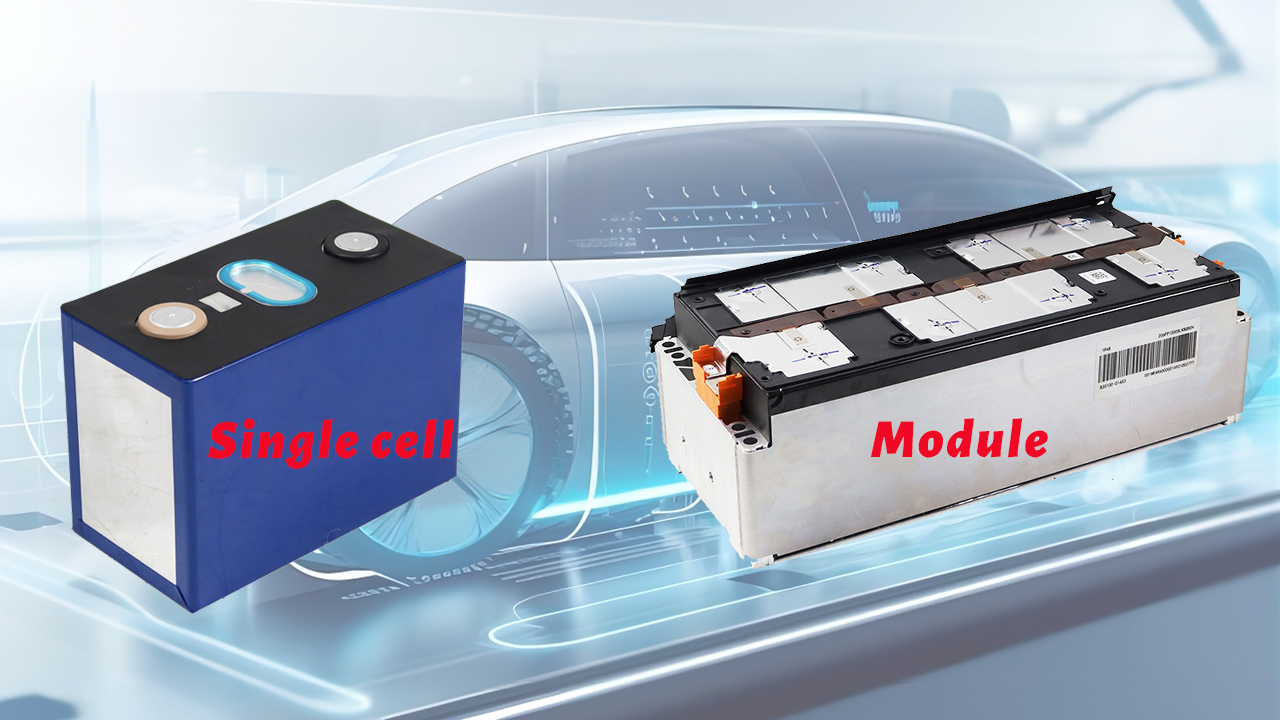Overview of battery modules
Battery modules are an important part of electric vehicles. Their function is to connect multiple battery cells together to form a whole to provide enough power for electric vehicles to operate.
Battery modules are battery components composed of multiple battery cells and are an important part of electric vehicles. Their function is to connect multiple battery cells together to form a whole to provide enough power for electric vehicles or energy storage operations. Battery modules are not only the power source of electric vehicles, but also one of their most important energy storage devices.
The birth of battery modules
From the perspective of the machinery manufacturing industry, single-cell batteries have problems such as poor mechanical properties and unfriendly external interfaces, mainly including:
1. The external physical state such as size and appearance is unstable, and will change significantly with the life cycle process;
2. Lack of simple and reliable mechanical installation and fixing interface;
3. Lack of convenient output connection and status monitoring interface;
4. Weak mechanical and insulation protection.
Because single-cell batteries have the above problems, it is necessary to add a layer to change and solve them, so that the battery can be assembled and integrated with the whole vehicle more easily. The module composed of several to ten or twenty batteries, with relatively stable external state, convenient and reliable mechanical, output, monitoring interface, and enhanced insulation and mechanical protection is the result of this natural selection.
The current standard module solves various problems of batteries and has the following main advantages:
1. It can easily realize automated production and has high production efficiency, and product quality and production cost are relatively easy to control;
2. It can form a high degree of standardization, which helps to significantly reduce production line costs and improve production efficiency; standard interfaces and specifications are conducive to full market competition and two-way selection, and retain better operability of cascade utilization;
3. Excellent reliability, which can provide good mechanical and insulation protection for batteries throughout the life cycle;
4. Relatively low raw material costs will not put too much pressure on the final power system assembly cost;
5. The minimum maintainable unit value is relatively small, which has a significant effect on reducing after-sales costs.
Composition structure of battery module
The composition structure of battery module usually includes battery cell, battery management system, battery box, battery connector and other parts. Battery cell is the most basic component of battery module. It is composed of multiple battery units, usually lithium-ion battery, which has the characteristics of high energy density, low self-discharge rate and long service life.
Battery management system exists to ensure the safety, reliability and long life of battery. Its main functions include battery status monitoring, battery temperature control, battery overcharge/over discharge protection, etc.
Battery box is the outer shell of battery module, which is used to protect battery module from external environment. Battery box is usually made of metal or plastic material, with corrosion resistance, fire resistance, explosion resistance and other characteristics.
Battery connector is a component that connects multiple battery cells into a whole. It is usually made of copper material, with good conductivity, wear resistance and corrosion resistance.
Battery module performance indicators
Internal resistance refers to the resistance of current flowing through the battery when the battery is working, which is affected by factors such as battery material, manufacturing process and battery structure. It is divided into ohmic internal resistance and polarization internal resistance. Ohmic internal resistance is composed of the contact resistance of electrode materials, electrolytes, diaphragms and various parts; polarization internal resistance is caused by electrochemical polarization and concentration difference polarization.
Specific energy – the energy of a battery per unit volume or mass.
Charge and discharge efficiency – a measure of the degree to which the electrical energy consumed by a battery during charging is converted into chemical energy that the battery can store.
Voltage – the potential difference between the positive and negative electrodes of a battery.
Open circuit voltage: the voltage of a battery when there is no external circuit or external load connected. The open circuit voltage has a certain relationship with the remaining capacity of the battery, so the battery voltage is usually measured to estimate the battery capacity. Working voltage: the potential difference between the positive and negative electrodes of a battery when the battery is in working state, that is, when there is current passing through the circuit. Discharge cut-off voltage: the voltage reached after the battery is fully charged and discharged (if the discharge continues, it will be over-discharged, which will damage the life and performance of the battery). Charge cut-off voltage: the voltage when constant current changes to constant voltage charging during charging.
Charge and discharge rate – discharge the battery with a fixed current for 1H, that is, 1C. If the lithium battery is rated at 2Ah, then 1C of the battery is 2A and 3C is 6A.
Parallel connection – The capacity of batteries can be increased by connecting them in parallel, and the capacity = the capacity of a single battery * the number of parallel connections. For example, Changan 3P4S module, the capacity of a single battery is 50Ah, then the module capacity = 50*3 = 150Ah.
Series connection – The voltage of batteries can be increased by connecting them in series. Voltage = the voltage of a single battery * the number of strings. For example, Changan 3P4S module, the voltage of a single battery is 3.82V, then the module voltage = 3.82*4 = 15.28V.
As an important component in electric vehicles, power lithium battery modules play a key role in storing and releasing electrical energy, providing power, and managing and protecting battery packs. They have certain differences in composition, function, characteristics and application, but all have an important impact on the performance and reliability of electric vehicles. With the continuous advancement of technology and the expansion of applications, power lithium battery modules will continue to develop and make greater contributions to the promotion and popularization of electric vehicles.
Post time: Jul-26-2024








